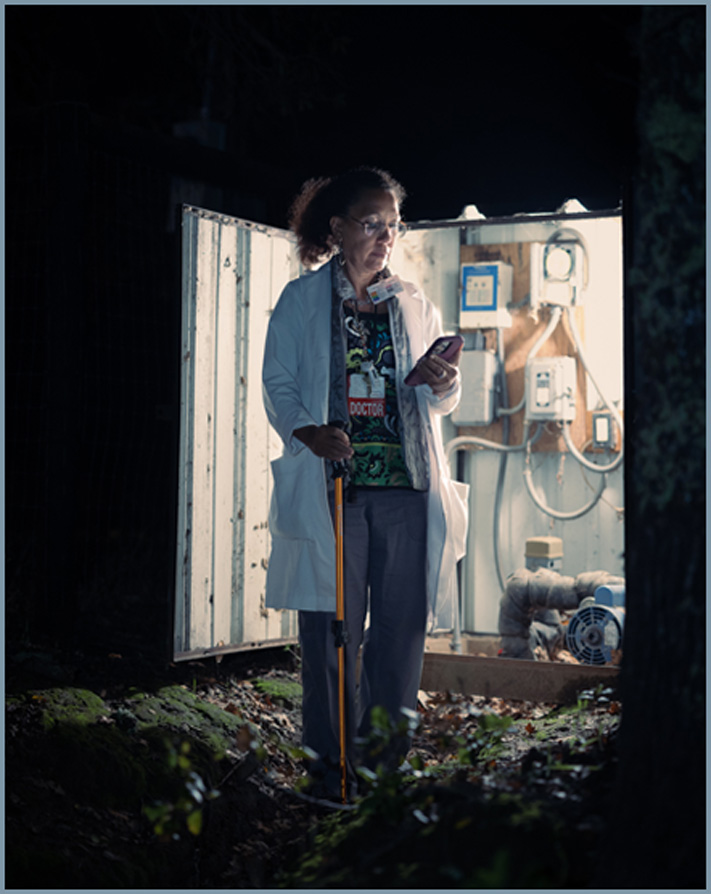- The problem:
For 20 years, doctor and single mom Donna Seabrooks trudged up the mountain 2-3x a week after work to check water levels. Like most rural homeowners, Donna had to maintain her own water system — and checking water levels was practically a part-time job. But not anymore: learn how meter.me solved Donna’s double decade water struggles.

Gordon Valley’s Donna Seabrooks stands by her water pump, about 350 meters from her home and about half a kilometer from her water tank.
-
The Solution:
Meet Donna Seabrooks, a single mom, doctor and longtime resident of rural Gordon Valley, on the outskirts of Napa County. Alpacas roam through a pasture between her water pump and her home, which is bordered by a thick stand of oak trees. Her tank is farther up the hill, wholly obscured by more oaks and a rising mountain.
There’s no cellphone reception by the pump, but there is electricity. There’s no electricity or sun exposure at the water tank, but sometimes you can find one lone cell signal bar there. For more than two decades, Donna hiked up the hill several times a week to check her water tank level and driven down the road to turn on her water pump. She would often underfill the pump or overfill it, losing precious water, but adjusting a pump in the middle of the night on a remote road, with two children sleeping back home, just wasn’t her priority.
Luckily, this photo of Donna is the last time we’ll see her standing by her water pump at dark, or for that matter, any time of day. A few months back, we installed meter.me’s water tank up the hill, powered by little or no sun, and with the ability to communicate over the ultra–low power LoRa network. In the coming weeks, we will install a pump controller, which will eliminate virtually all of Donna’s nightly excursions to the pump shed.
You might wonder why Donna could not take advantage of the many water automation systems already on the market—not for lack of trying, she told us. This white paper tells Donna’s story, the ways meter.me will save her huge amounts of water and how we can replicate Donna’s success story worldwide—and be on the right side of the everchanging climate story.